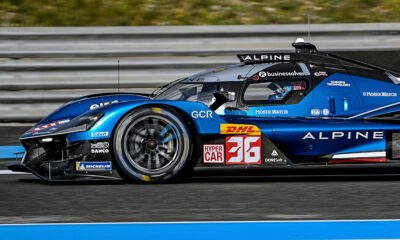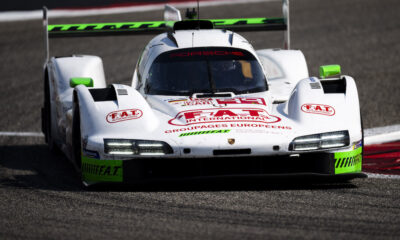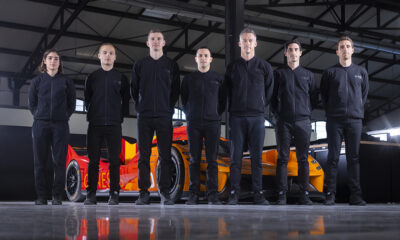
Image: FIA WEC
The FIA has released technical regulations for the new breed of FIA World Endurance Championship top-level ‘hypercar’ prototypes arriving in 2020.
The published rules, which became available on the FIA website Wednesday afternoon, confirms many of the initial details presented in brief at the 24 Hours of Le Mans in June, although there is new information in key areas, including the mandatory use of production-based powertrains.
A minimum of 25 road cars fitted with the combustion engine and energy recovery system (ERS) of the racing car must be produced by the end of a manufacturer’s first season, with that amount rising to 100 by the end of its second season.
The rules state that these production examples must feature the same combustion engine and ERS system found in the racing version, but with certain modifications permitted.
It implies that non-OEM constructors, such as ORECA, Onroak Automotive and Dallara, would not be permitted to build ‘generic’ hypercars, with an ‘off-the-shelf’ hybrid system not appearing in the regulations either.
The new ‘hypercars’, which have yet to be given a formal name, will have a total maximum power output of roughly 950 horsepower (708 kW) drawn from the combustion and electric hybrid system.
This number is slightly lower than the initial top figure presented in June, with the maximum output of the combustion engine now at 508 kW rather than 520, although the 200 kW electric unit power output remains the same.
As originally planned, there are few caps on engine architecture, meaning manufacturers can run turbocharged or normally-aspirated configurations with no maximum displacement or size.
There will, however, be a 3 million Euro ($3.4 million US) cost cap on the supply of ERS systems from manufacturers to customer teams, while an ERS manufacturer cannot supply a system to more than three competitors without approval.
The rules also confirm that the new cars, which are set to replace the LMP1 category in the 2020-21 WEC season, will be slightly larger than existing LMP1 hybrid machinery.
A maximum length of 5000 mm has been laid out, along with a maximum width of 2000 mm.
These measurements are longer than the 4650 mm length and 1900 mm width upper limits stated in the current regulations.
Furthermore, the minimum weight of the new-generation cars will be raised from the initially-stated 980 kg to 1040 kg, making the class 165 kg heavier than the LMP1 hybrid formula.
EVO Kits, Movable Aero Introduced
Hypercar constructors will be able to build evolution kits for their cars during the first five years of the formula.
These are limited to five EVO jokers per manufacturer from the start of the 2020-21 season until the end of 2024-25, and will enable manufacturers to develop their cars without needing to introduce a new model.
Movable aerodynamic devices, which are banned under the LMP1 rulebook, will also be permitted from 2020 onwards.
Front and rear aerodynamic aids will be allowed, but they must have only two set positions and cannot run in different configurations at the same time.
Success Ballast to be Introduced
The FIA and ACO confirmed that a success ballast system will be implemented to ensure close competition in the top category.
This will be based on points accumulated in previous races, with each point in an entry’s total worthy of a 0.5 kg weight addition, to a maximum of 50 kg.
The introduction of success ballast for 2020-21 follows Wednesday’s confirmation that the WEC will use a similar system to govern its GTE-Am class in the 2019-20 season.























